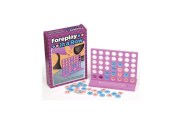Here are some ideas we used.
Pre-verbal frustration
An advantage my son had was the early gift of communication. We waved simple signs at him since birth. A squeezing fist for milk. All fingers brought together for more. We got our ideas from a sign language chart we’d been given at our baby shower. With a blend of open-mindedness and skepticism, we thought it couldn’t hurt.
My son could tell us what he wanted – even before language kicked in. Something in the clarity of that simple act helped keep his frustration level down. It also reinforced his larger theme of need: my parents are listening to what I’m asking for.
If you cry, the answer is no
Around two years old, my son was able to speak simple needs. At this time, we kept repeating a kind of mantra to him when he cried for what he wanted: if you cry, the answer is no. It didn’t take long for him to see that we were serious. Now this didn’t mean that if he used his words to ask, that the answer would automatically be yes. He did know that at least his request would be considered. And, as parents, we knew we could make a better decision without the pressure of a screaming child. We would watch friends with much older children, crying for what they wanted even before they had heard the answer—a sure sign that they had made that style their habit. We also helped him understand that “crying instead of asking” was different than the kind of crying when one is a hurt.
Playing the Violin
What I noticed about tantrums or other behavior that really gets a parent, is that if it works once, allowing the child the outcome they want, then why not try again. Children have a built in detector for these kinds of behaviors.
When Zed got too frustrated and went into physical agitation or a tantrum, Barry and I would pull out the “Playing the Violin” tactic. We would make sure he was safe (usually somewhere on the floor.) We stayed close by doing something we liked or needed to do: reading, knitting, vacuuming, playing the guitar (or violin.) We let him know periodically that he was safe and loved— and let the tantrum run its course.
After a few times of that, no more tantrums.
Reminders:
- If the child cries instead of asks, the answer is always no.
- Think of a tantrum as time for yourself.
- Remind the child that they are safe and loved.
- Stay close by, but do your own thing.
- If you are sound sensitive, use ear plugs.








